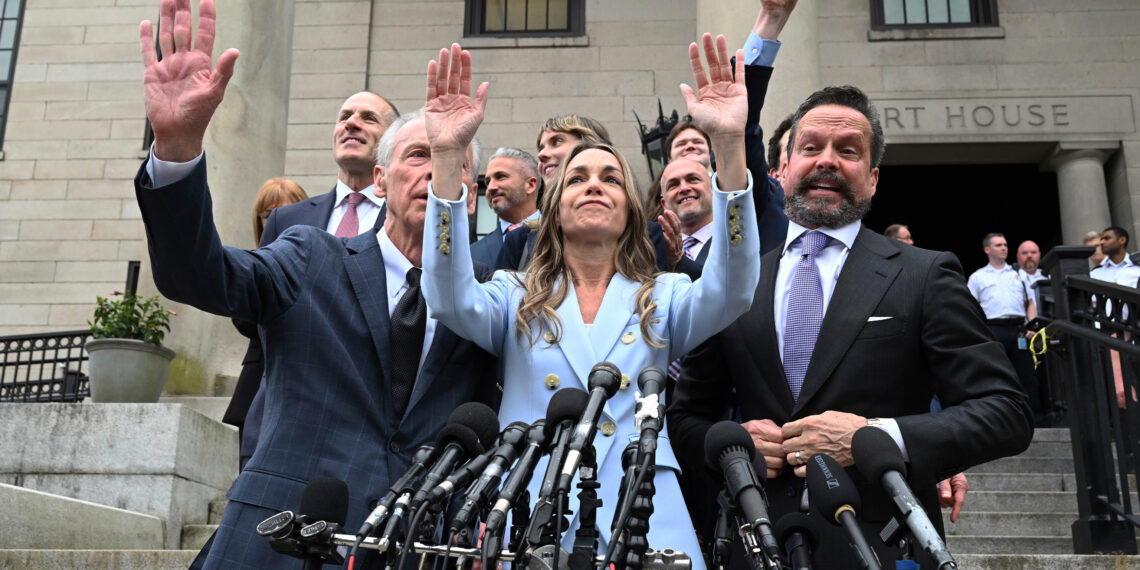The Karen Read trial has garnered widespread attention, stirring public debate and media speculation. At the heart of this highly charged legal battle lies the complexities surrounding allegations of criminal behavior, the judicial process, and the profound impact of media coverage. As audiences closely follow the unfolding events, it becomes crucial to dissect the intricate details of this captivating legal drama.
Background of the Karen Read Trial
Karen Read is accused in connection with the death of John O’Keefe, a Boston police officer whose tragic demise has rocked the community. This case quickly captured headlines due to its dramatic nature, the involvement of law enforcement personnel, and the questions surrounding evidence handling and the fairness of proceedings. The public scrutiny intensified as more details emerged, leading to a fervent examination of the judicial system’s integrity and transparency.
Events Leading to the Trial
The night of the incident involved a series of events where John O’Keefe was allegedly struck by a vehicle, resulting in fatal injuries. Karen Read, identified as O’Keefe’s partner at the time, became the primary suspect. Authorities charged her with serious offenses, including manslaughter, setting the stage for an emotionally charged legal confrontation.
Charges Filed Against Karen Read
Karen Read faced charges of second-degree murder and motor vehicle homicide, accusations that her defense team has vigorously contested. The defense claims the charges are unfounded, pointing to alleged inconsistencies in the evidence presented by the prosecution, sparking significant debate and polarizing public opinion.
Key Elements in the Karen Read Trial
The Karen Read trial highlights several essential elements that have drawn significant attention from legal analysts and the public alike.
Evidence Handling and Controversies
One of the critical debates in the Karen Read trial revolves around the handling and admissibility of evidence. The defense raised substantial concerns regarding procedural missteps, alleging evidence contamination and suggesting potential investigative biases. These claims prompted widespread discussions about investigative integrity and the importance of procedural correctness to maintain public trust.
Role of Media Coverage
Media coverage has significantly impacted the Karen Read trial, with extensive reporting shaping public perception. Critics argue that media narratives have sometimes overshadowed judicial facts, potentially influencing jury impartiality and public opinion. The debate over responsible reporting versus sensationalism underscores the trial’s broader societal implications.
Impact of Public Opinion
Public opinion, largely shaped by extensive media coverage, has profoundly influenced the Karen Read trial. Social media platforms have amplified discussions, often creating polarized camps that either staunchly support or oppose Read’s innocence. This phenomenon highlights the growing intersection between digital platforms, public sentiment, and legal proceedings.
Legal Arguments Presented
Both the prosecution and defense have presented compelling arguments throughout the trial, seeking to persuade the jury and court observers of their narratives.
Prosecution’s Arguments
Prosecutors have relied on forensic evidence, eyewitness testimonies, and expert analyses, aiming to establish Karen Read’s culpability beyond reasonable doubt. Their case underscores the gravity of the accusations, presenting Read as responsible for O’Keefe’s untimely death through alleged reckless conduct.
Defense’s Counterarguments
Conversely, the defense team has robustly challenged the prosecution’s narrative. They have argued vigorously about inconsistencies in witness testimonies, potential investigative errors, and lack of conclusive forensic evidence directly implicating Karen Read. Their arguments focus heavily on casting reasonable doubt, highlighting procedural flaws, and questioning the reliability of key evidence.
The Broader Implications of the Karen Read Trial
Beyond the immediate legal ramifications, the Karen Read trial carries broader societal implications, particularly regarding trust in law enforcement, judicial integrity, and the impact of public narratives on the legal process.
Trust in Law Enforcement
The involvement of a police officer as the victim significantly impacted perceptions of law enforcement. The public scrutiny accompanying the Karen Read trial has raised critical questions about accountability, transparency, and the effectiveness of internal oversight within police departments.
Judicial System Transparency
Transparency within the judicial system has emerged as a critical theme, particularly in high-profile cases like the Karen Read trial. Observers have called for increased accountability and clearer communication from judicial authorities to prevent misinformation and ensure public trust remains intact.
Influence of Digital Media
The role of digital media in shaping perceptions and potentially influencing legal outcomes has been a significant concern during the Karen Read trial. Social media, with its instant and far-reaching impact, presents new challenges for legal authorities in maintaining impartiality and preventing trial by public opinion.
Conclusion
The Karen Read trial encapsulates complex issues related to judicial fairness, public accountability, and media influence. As the trial continues, the public’s attention remains firmly fixed, eager to see justice served impartially. Regardless of the outcome, this trial underscores the vital importance of a fair, transparent judicial process and the necessity of responsible media reporting in preserving justice.
Ultimately, the Karen Read trial serves as a poignant reminder of the profound effects legal proceedings have not only on the accused and victims’ families but also on society’s broader perceptions of justice and fairness. The trial’s outcome will undoubtedly resonate beyond the courtroom, shaping public discourse around similar future cases.








